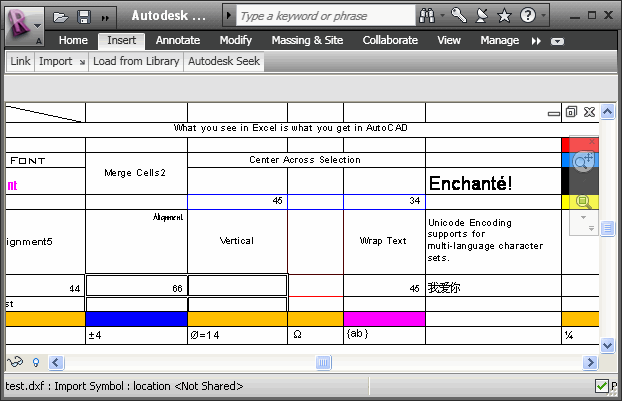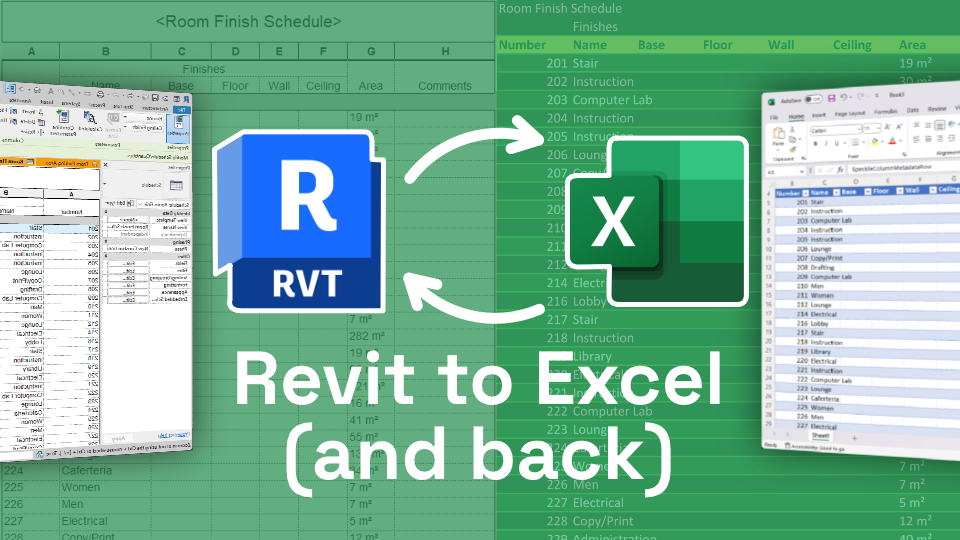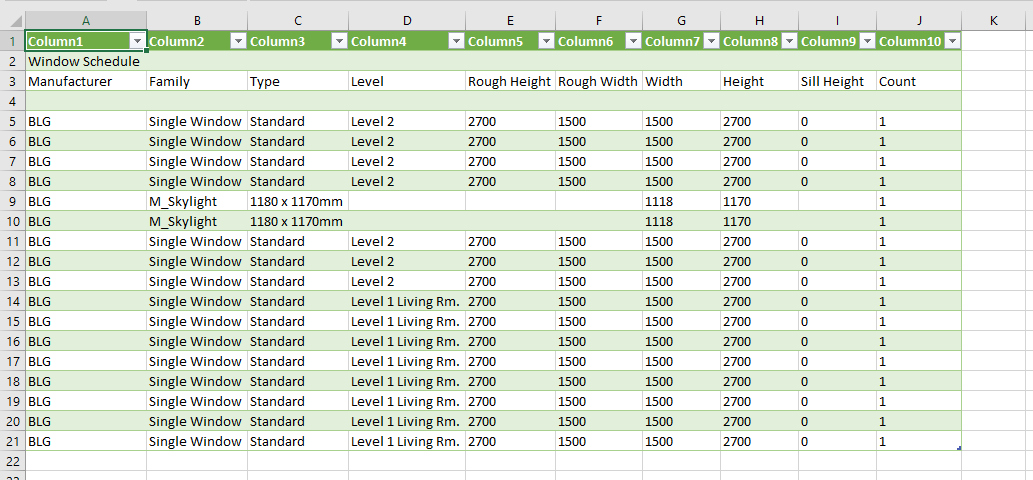Damaging Barriers: Excel Importation Techniques for Advanced Revit Users
Are you a sophisticated Revit user looking to take your abilities to the next degree? In this write-up, we will certainly show you how to damage barriers by leveraging Excel for importation in Revit. Discover different data importation approaches and master Excel combination to enhance your Revit modeling capacities. With our methods and ideas, you can conquer importation obstacles and end up being a true professional in utilizing Excel for your Revit tasks. Prepare to stand out in your Revit trip!
Advanced Revit Users: Leveraging Excel for Importation
You can conveniently take advantage of Excel for importation as an advanced Revit individual. Excel is an effective device that can significantly enhance your operations and effectiveness in Revit. With its capacity to deal with huge amounts of information and execute complicated estimations, Excel can be a valuable possession in handling and arranging your project info.
One means to utilize Excel for importation is by utilizing the "Link Excel" function in Revit. This attribute allows you to link an Excel spreadsheet directly right into your Revit task, enabling you to update and integrate information in between the two programs. This can be especially beneficial when managing schedules or tracking changes in your project.
One more method to use Excel is by making use of the "Import/Export" feature in Revit. This attribute enables you to import and export information between Revit and Excel, giving you the flexibility to collaborate with data in both programs. You can import data from Excel into Revit to create components such as wall surfaces, areas, or doors, and you can additionally export information from Revit to Excel for more evaluation or reporting.

Exploring Information Importation Approaches in Revit Making Use Of Excel
Discovering just how to import information from Excel right into Revit uses effective techniques for incorporating details. When you import information from Excel, you can effortlessly move information such as space routines, material lists, and equipment information into your Revit job. This procedure enables you to conserve time and initiative by preventing hand-operated data entrance.
To import data from Excel into Revit, you can make use of the "Import/Export" attribute. This attribute enables you to map the Excel data fields to the equivalent Revit criteria, guaranteeing that the information is correctly appointed within the version. By choosing the suitable import options, you can regulate exactly how the data is imported and just how it interacts with your task.
One more method for importing information from Excel right into Revit is by utilizing Eager beaver. Eager beaver is a visual shows device that integrates with Revit and allows you to automate jobs and process. With Dynamo, you can develop customized scripts that import information from Excel and manipulate it within your Revit task. This technique provides a lot more flexibility and customization alternatives.
Grasping Excel Assimilation for Advanced Revit Modeling
Grasping Excel assimilation for innovative Revit modeling includes utilizing effective approaches to perfectly move data and automate tasks within your task. By utilizing the power of Excel, you can boost your Revit modeling process and conserve important time. One vital technique is importing data from Excel spread sheets directly into your Revit design. This permits you to populate parameters, such as space names or product amounts, easily. With a couple of simple steps, you can map the Excel columns to the matching Revit criteria and import the information precisely.
One more valuable approach is exporting data from Revit to Excel. This enables you to extract info from your design, such as schedules or material amounts, and examine it in Excel making use of solutions, graphes, or various other effective devices. By leveraging the capacities of Excel, you can perform intricate estimations, create custom reports, and gain valuable insights into your project.
Along with information transfer, Excel assimilation can automate repetitive tasks in Revit. By creating macros or scripts in Excel, you can automate processes like creating sights, creating sheets, or using typical family members - revit plugins. This not only saves time but also ensures uniformity throughout your job
To grasp Excel integration in Revit, it is essential to understand the information framework and exactly how Revit engages with Excel. By familiarizing yourself with the readily available devices and methods, you can unlock the complete capacity of Excel assimilation and take your Revit modeling to the following level.
Conquering Importation Difficulties: Excel Techniques for Revit Experts
When conquering importation difficulties, it's essential to be familiar with reliable Excel techniques that can profit experts in Revit. As a sophisticated Revit customer, you understand the revit add ins significance of seamlessly importing data from Excel right into your projects.

An additional helpful method is using the "Transpose" function in Excel. This permits you to convert data from rows to columns or the other way around. When importing data into Revit, this can be especially helpful when you have data in a vertical layout in Excel, yet you need it to be in a horizontal format in Revit.
Moreover, making use of Excel formulas such as VLOOKUP and INDEX-MATCH can significantly help in mapping information from Excel to Revit. These solutions allow you to search for details values in Excel and get equivalent data from another column. This can save you effort and time when importing big datasets right into Revit.
Excel Information Importation Idea for Advanced Revit Users
By acquainting yourself with reliable Excel suggestions and methods, you can enhance your information importation process as a sophisticated customer of Revit. Excel is a powerful device that can significantly promote the importation of data into Revit, conserving you time and increasing your efficiency. One useful idea is to make use of the "Text to Columns" feature in Excel to divide information into different columns based upon a delimiter. When you have information in a single column that needs to be divided right into numerous columns in Revit, this can be especially valuable. In addition, using Excel's "Paste Special" attribute permits you to paste data from Excel into Revit while preserving formatting, such as cell shade or font design. This can be particularly helpful when importing data that calls for specific formatting in Revit. Another useful technique is to utilize Excel's "Change and locate" feature to quickly make adjustments to your data before importing it into Revit. For example, you can quickly replace specific text or characters with others, saving you the time and effort of by hand editing and enhancing the information in Revit. By utilizing these Excel techniques and tips, you can enhance your information importation process and end up being much more skillful in operation Revit.
Conclusion
You have actually now learned beneficial methods for importing data from Excel right into Revit as an advanced customer. By leveraging the power of Excel combination, you can simplify your modeling process and overcome any type of importation challenges that might arise. With these pointers and techniques, you will certainly be able to understand data importation and boost your Revit skills. Go in advance, break those obstacles and excel in your Revit jobs!

When importing data into Revit, this can be especially helpful when you have information in an upright format in Excel, however you require it to be in a straight format in Revit.
Moreover, making use of Excel solutions such as VLOOKUP and INDEX-MATCH can significantly help in mapping information from Excel to Revit. Additionally, using Excel's "Paste Special" attribute permits you to paste data from Excel into Revit while preserving formatting, such as cell shade or font design.